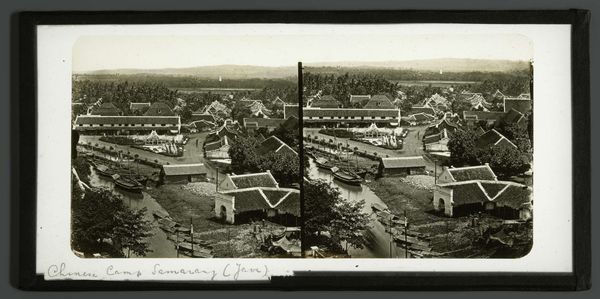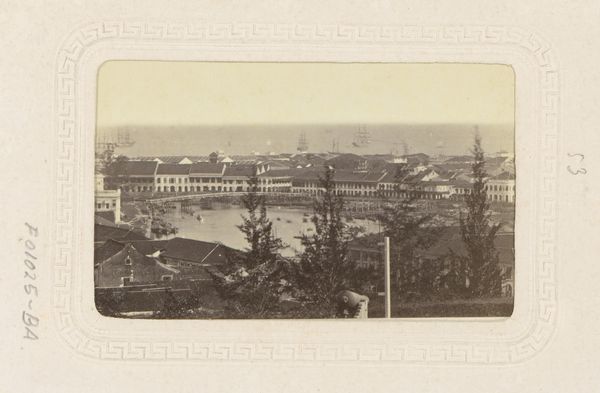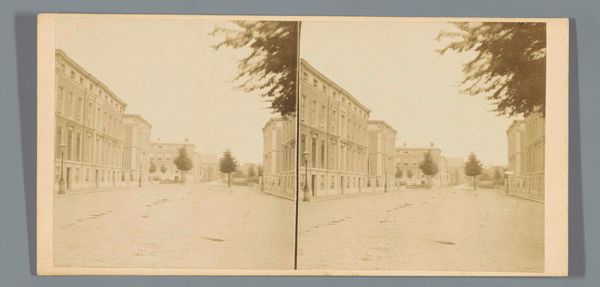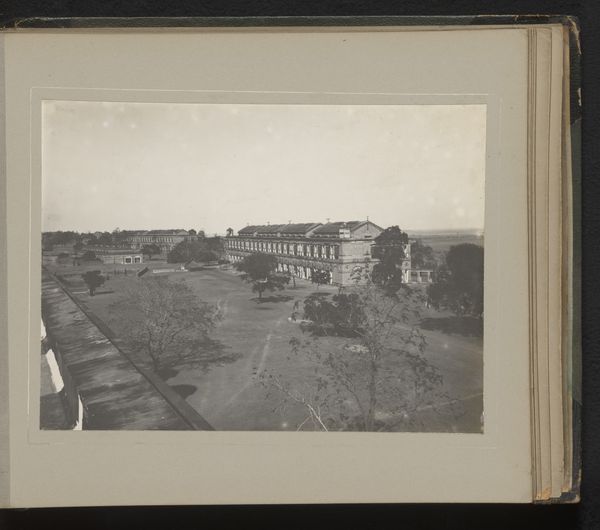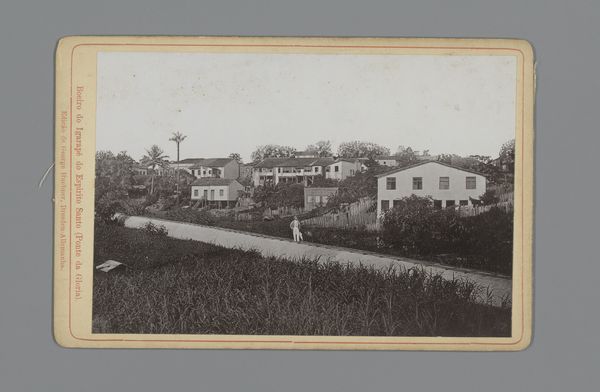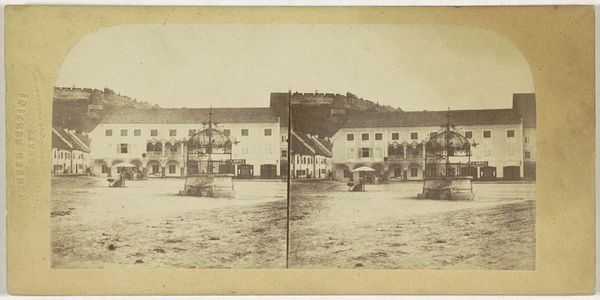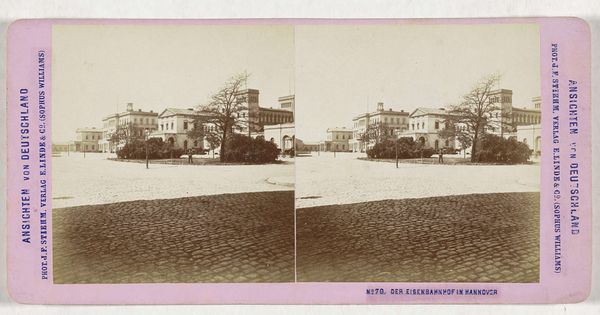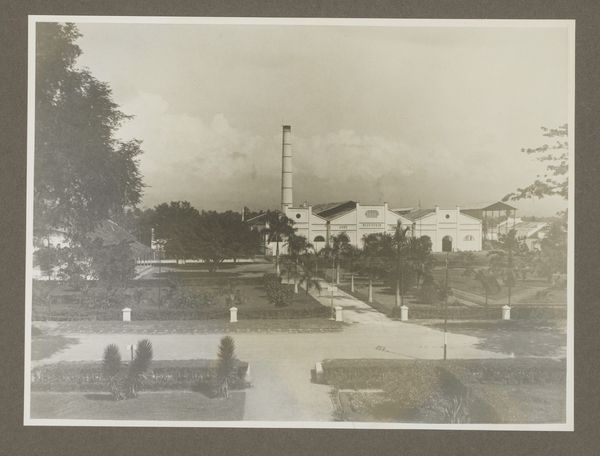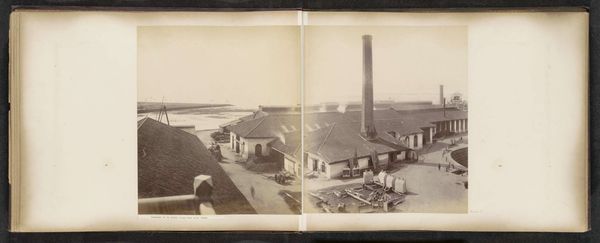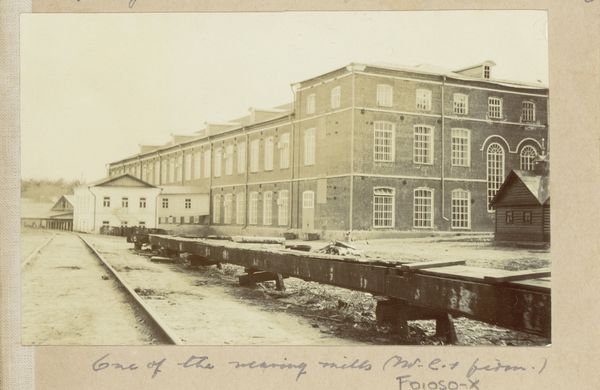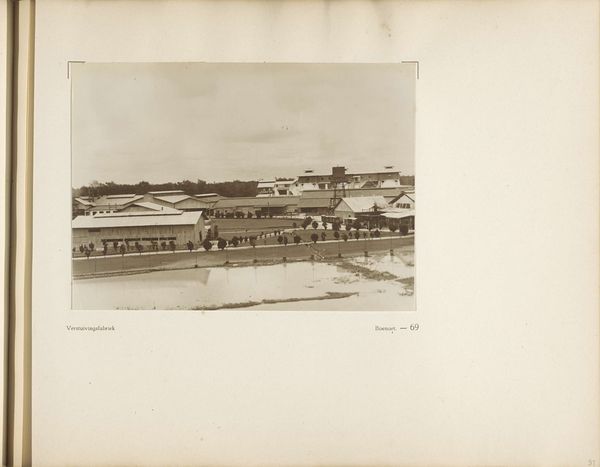
photography, albumen-print
#
asian-art
#
landscape
#
photography
#
cityscape
#
street
#
albumen-print
Dimensions: height 85 mm, width 170 mm
Copyright: Rijks Museum: Open Domain
Curator: Allow me to introduce "Straat in Semarang," a compelling albumen print made sometime between 1857 and 1864 by the studio of Woodbury & Page. Editor: My initial impression is one of stark formality; the repetition of those rectangular buildings, coupled with the monochromatic tones, generates a strong sense of order and perhaps a subtle feeling of detachment. Curator: Indeed. This photographic document speaks volumes about the Dutch colonial presence in Indonesia at that time. Consider how this meticulous rendering of a Semarang street constructs a certain image of governance and control. Editor: The perspective is key. We are positioned above the street, an implied power dynamic placing the viewer as the observer, neatly arranging elements. It’s interesting how the strong diagonal lines, created by the row of buildings converging, pulls you through the space. Curator: I agree; it’s a study in constructed visibility. Note the carefully arranged buildings—their architecture reflecting a clear European influence—juxtaposed against the implied, less visible local life happening beyond those facades. The photograph is now held in the collection of the Rijksmuseum. Editor: Let's focus on those buildings further, a formal sequence articulated with linear clarity—repeated vertical colonnades supporting horizontal roofs, asserting its presence with stark monumentality, doesn't it? How does the implied vanishing point interact with the perceived narrative? Curator: Good point. The albumen print’s sharp focus provides clarity but it obscures deeper historical tensions. Colonialism's reach goes far beyond merely reshaping a landscape, doesn’t it? It reframes societies through economic leverage and visible power. Editor: So, would it be valid to read this city street less as a neutral topographic record and more as an expression of colonial influence expressed through formal pictorial decisions and aesthetic means? Curator: Exactly. It's crucial to critically engage how such seemingly objective records worked actively in crafting and perpetuating imperial ideology. The ordering of space mirrored a wider social agenda. Editor: Considering the visual mechanics present, a fascinating dance between photographic image as information carrier, colonial ambition made solid, and a frozen moment to spark contemplation on deeper cultural tensions that linger within the frame.
Comments
No comments
Be the first to comment and join the conversation on the ultimate creative platform.

